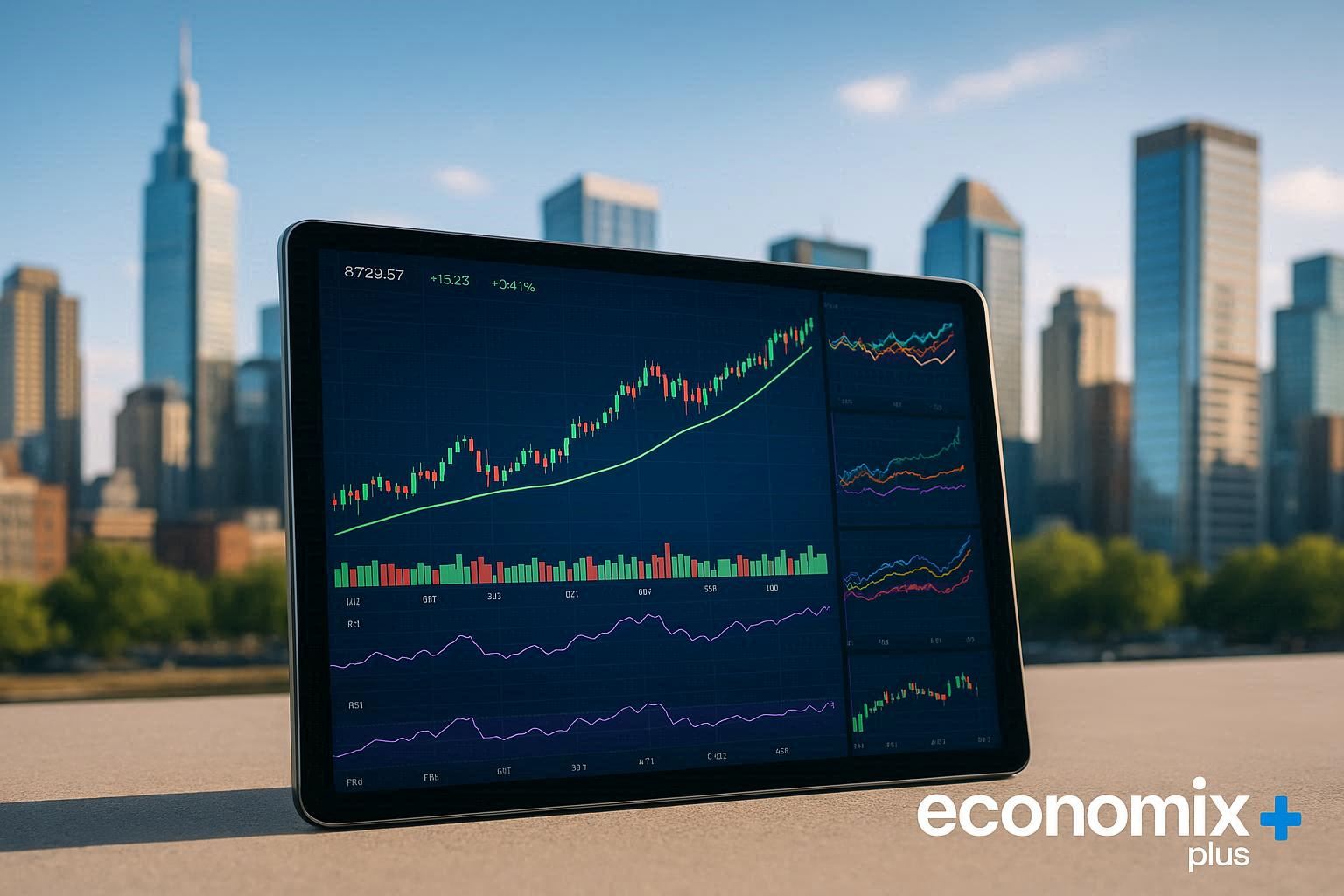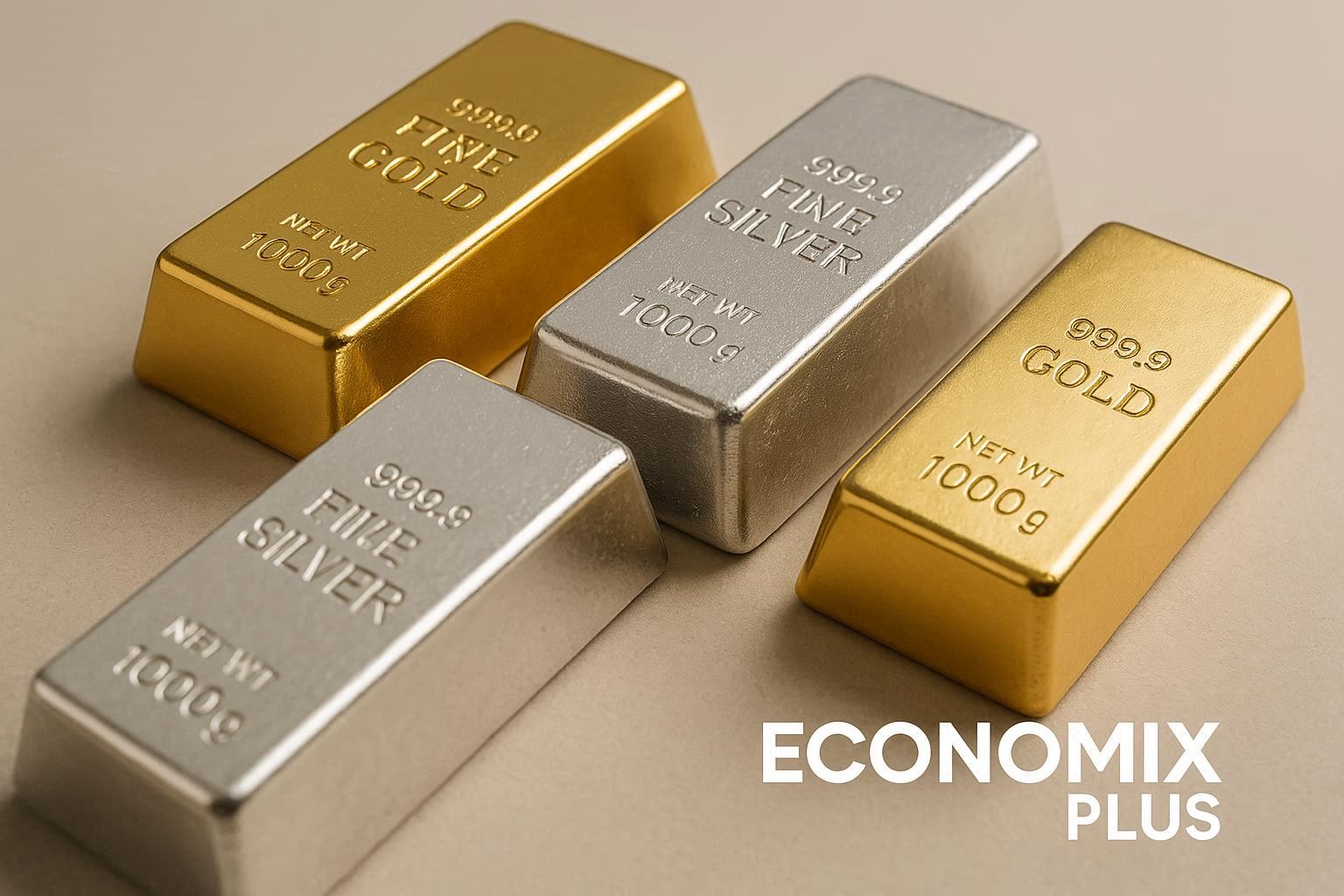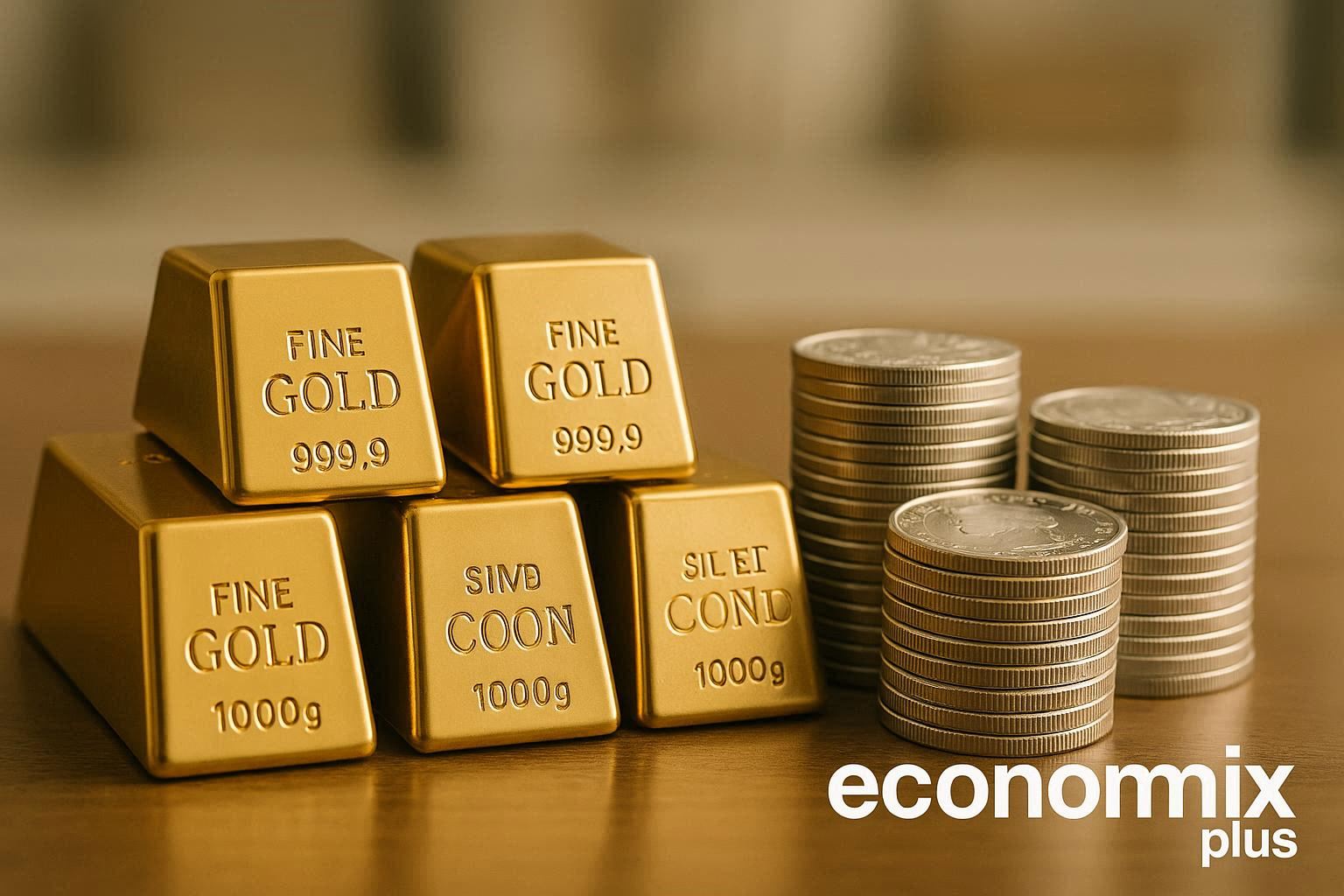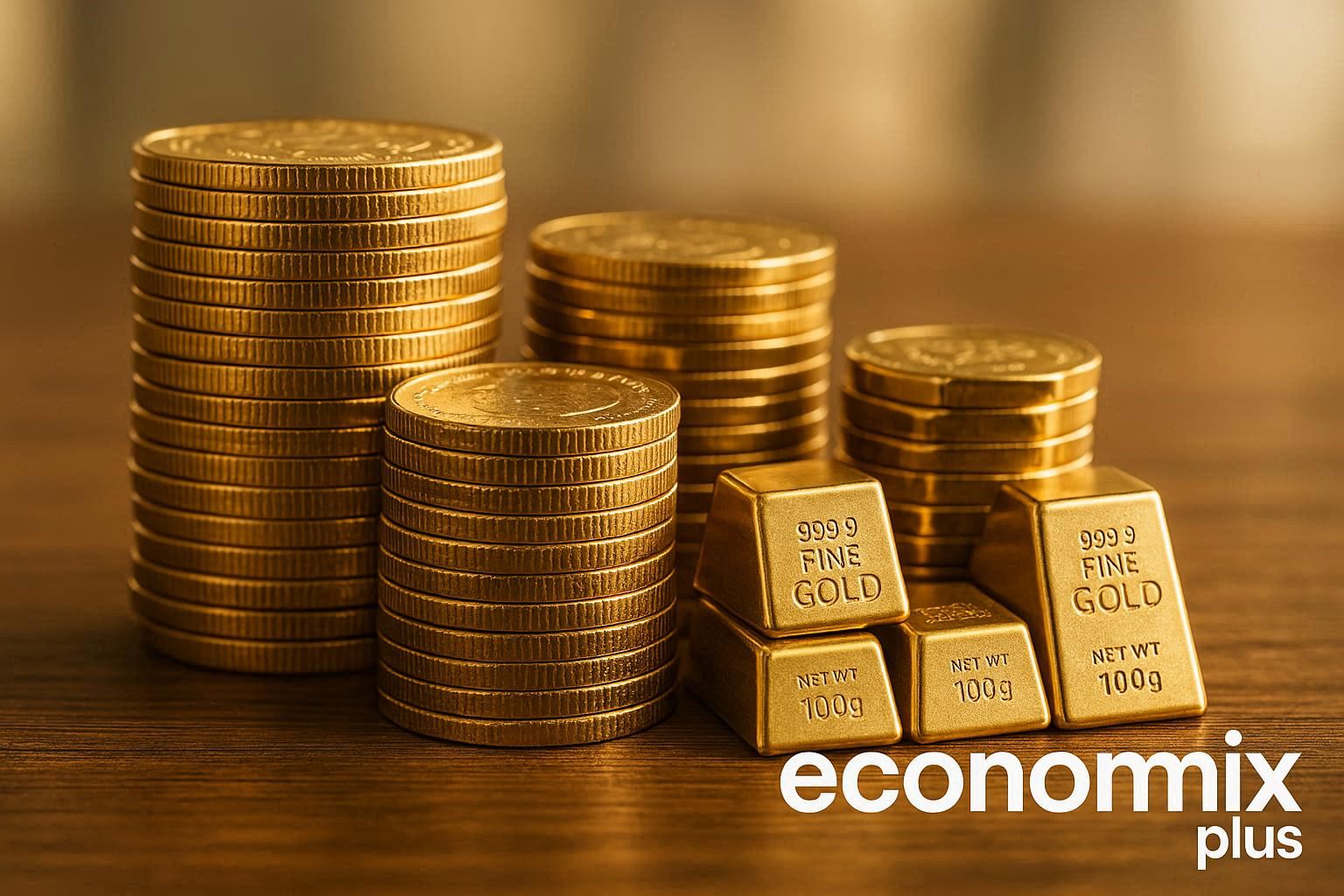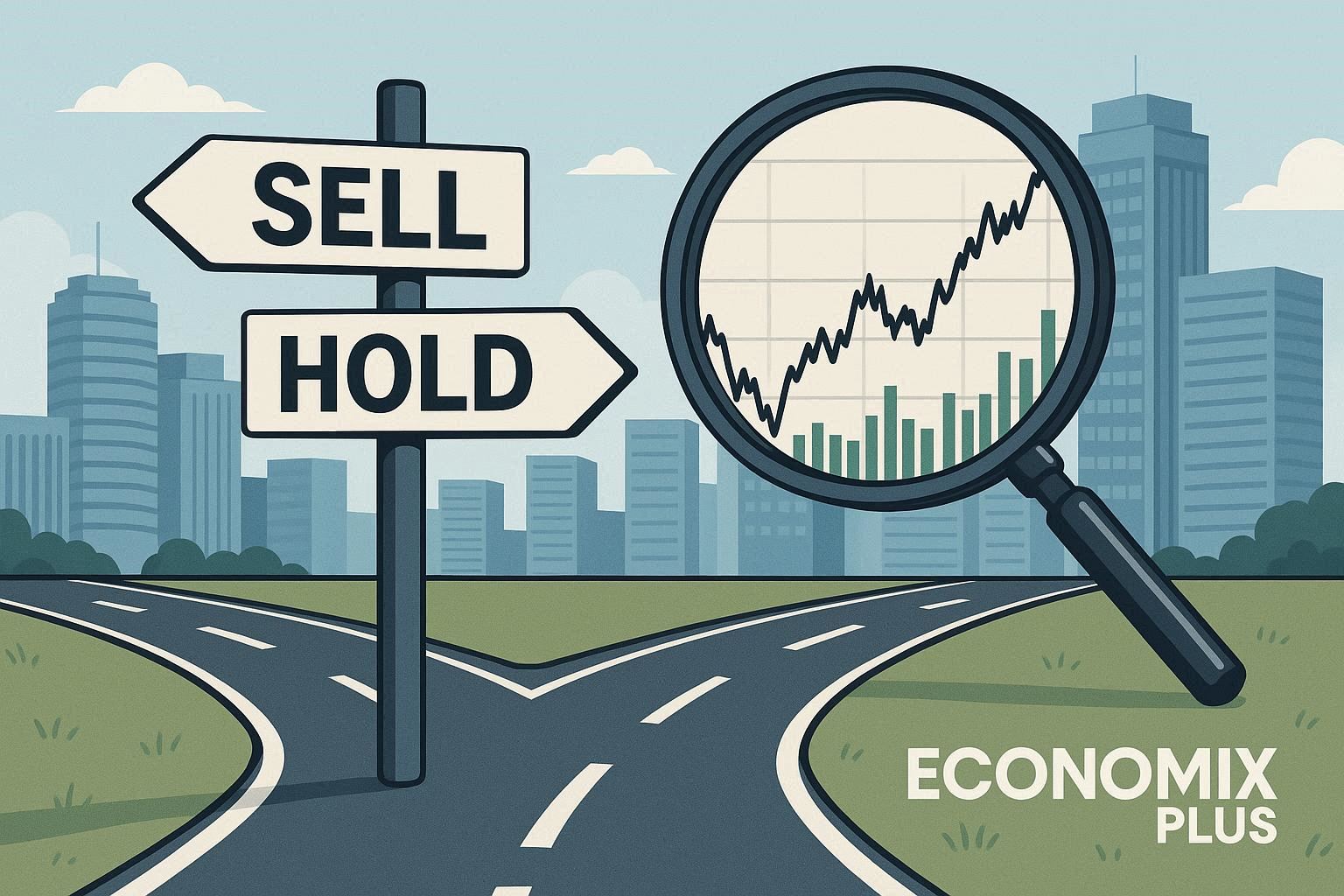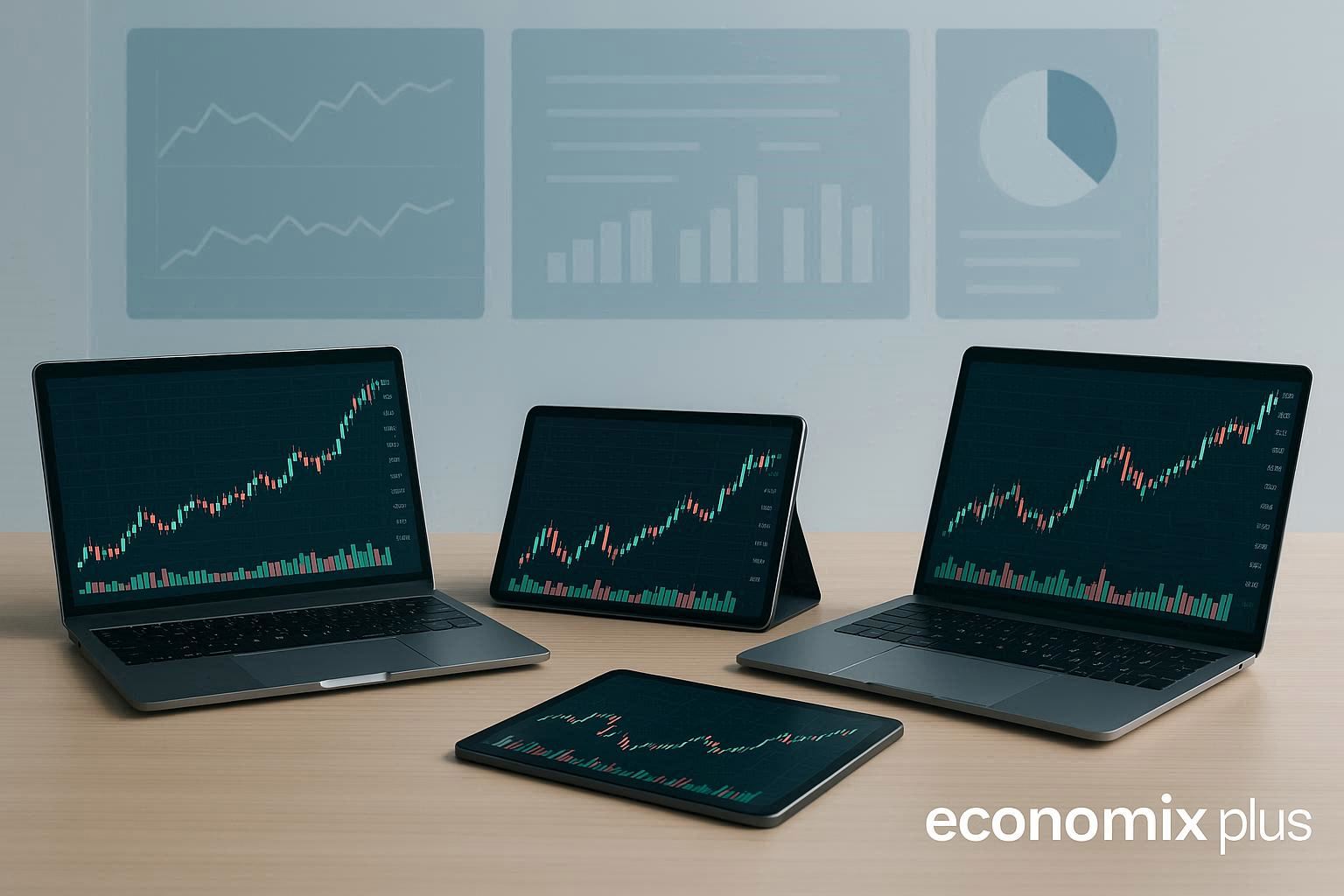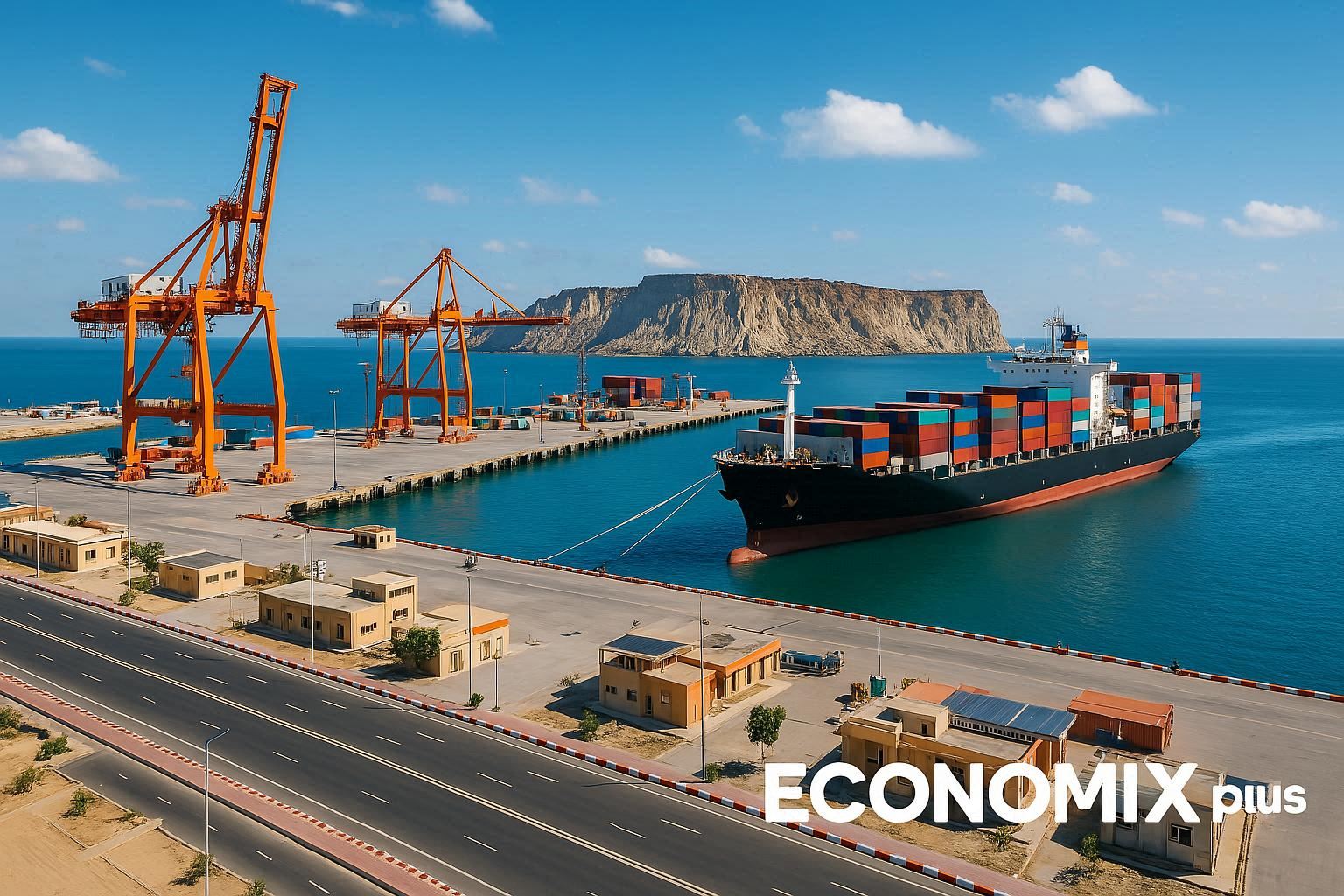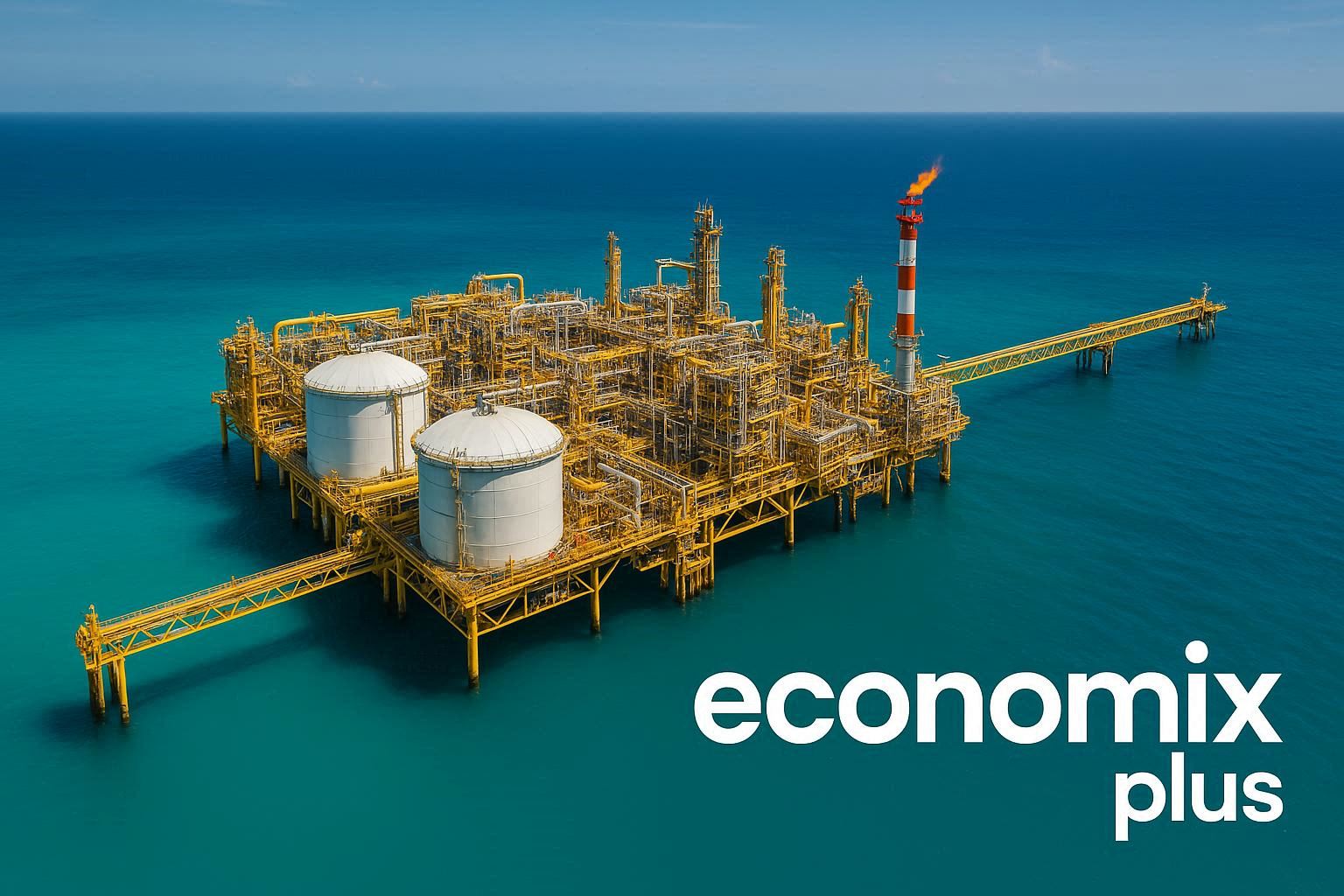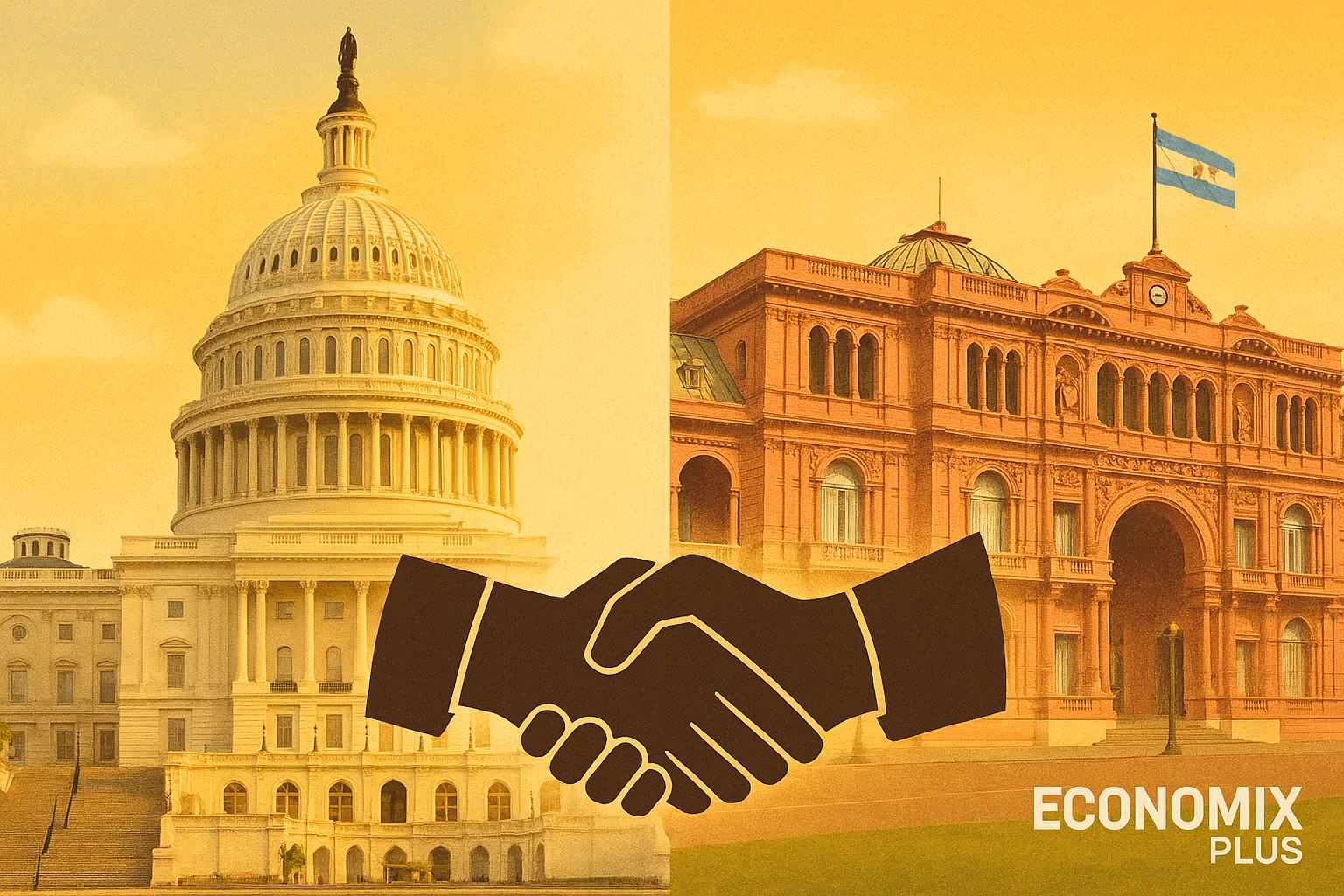Have you ever noticed how prices keep changing? This is because of inflation. It affects our economy and daily lives.

Greg Hazle, the head of Boca Helping Hands, shared a worrying fact. Food donations have dropped by 40% because of inflation. This shows how inflation can affect many areas, including food banks and those they help.
The banking system is key to a country’s economy. It influences inflation. Knowing how the banking system affects inflation can help manage it better. This could lead to more fair and interest-free financial practices.
Key Takeaways
- The banking system has a big impact on a country’s inflation rate.
- Inflation affects not just the economy but also daily life, including food donations.
- Understanding the inflation and banking relationship is key to managing inflation.
- Economic stability can be influenced by the financial system’s impact on inflation.
- Ethical financial practices may offer a way to lessen the bad effects of inflation.
The Fundamental Relationship Between Banking and Inflation
Understanding how banking systems affect inflation is key to your financial health. The banking system is central to a country’s economy. It shapes monetary policy and, in turn, influences inflation rates.
Defining Inflation in Economic Terms
Inflation means prices for goods and services keep going up over time. It’s tracked as an annual rise in the Consumer Price Index (CPI).
How Inflation Affects Your Purchasing Power
As inflation grows, your money buys less. The same cash can’t get you as much as it used to. Knowing this helps you make better financial choices.

The Banking System’s Role in Money Supply
The banking system, mainly central banks, controls a country’s money. Central banks use different methods to manage money supply, affecting inflation.
Beyond Interest: Alternative Mechanisms of Money Creation
Central banks can buy assets like gold to manage risks and fight inflation (Source: The Economic Times). This action changes money supply and can alter inflation rates. It’s important to understand these methods to see how banking and inflation are linked.
Understanding Ethical Banking Principles
Ever wondered how ethical banking works? It’s based on key values like transparency and social responsibility. Knowing these values helps you make better financial choices.
Core Values of Interest-Free Banking
Interest-free banking is all about fairness and equity. It doesn’t use interest, instead focusing on profit-and-loss sharing models. This makes sure everyone gets treated fairly in financial deals.
Transparency and Social Responsibility in Your Financial Choices
Choosing an ethical bank means supporting a bank that’s open and cares about society. They clearly share their financial actions and follow social responsibility rules. These banks also fund community projects and support green practices.
Profit-and-Loss Sharing Models
Profit-and-loss sharing is a big part of ethical banking. It spreads out financial risks and rewards fairly. This model supports equity-based financing, where everyone benefits from investments.
How Equity-Based Financing Works for Consumers
In equity-based financing, the bank and you share the risks and rewards. This creates a partnership where both sides work together. For example, in business financing, the bank’s success is tied to the business’s success.

How Central Banks Influence Monetary Policy Without Interest
Central banks play a big role in the economy, even without using interest rates. They do this with special tools.
Alternative Monetary Policy Tools
Central banks use many tools to shape the economy. One important method is open market operations. They buy or sell government bonds to change the money in the economy.
Open Market Operations Through Ethical Instruments
Central banks use ethical tools in open market operations. This helps keep the financial system stable while following ethical banking rules. It helps control the money flow in the system.
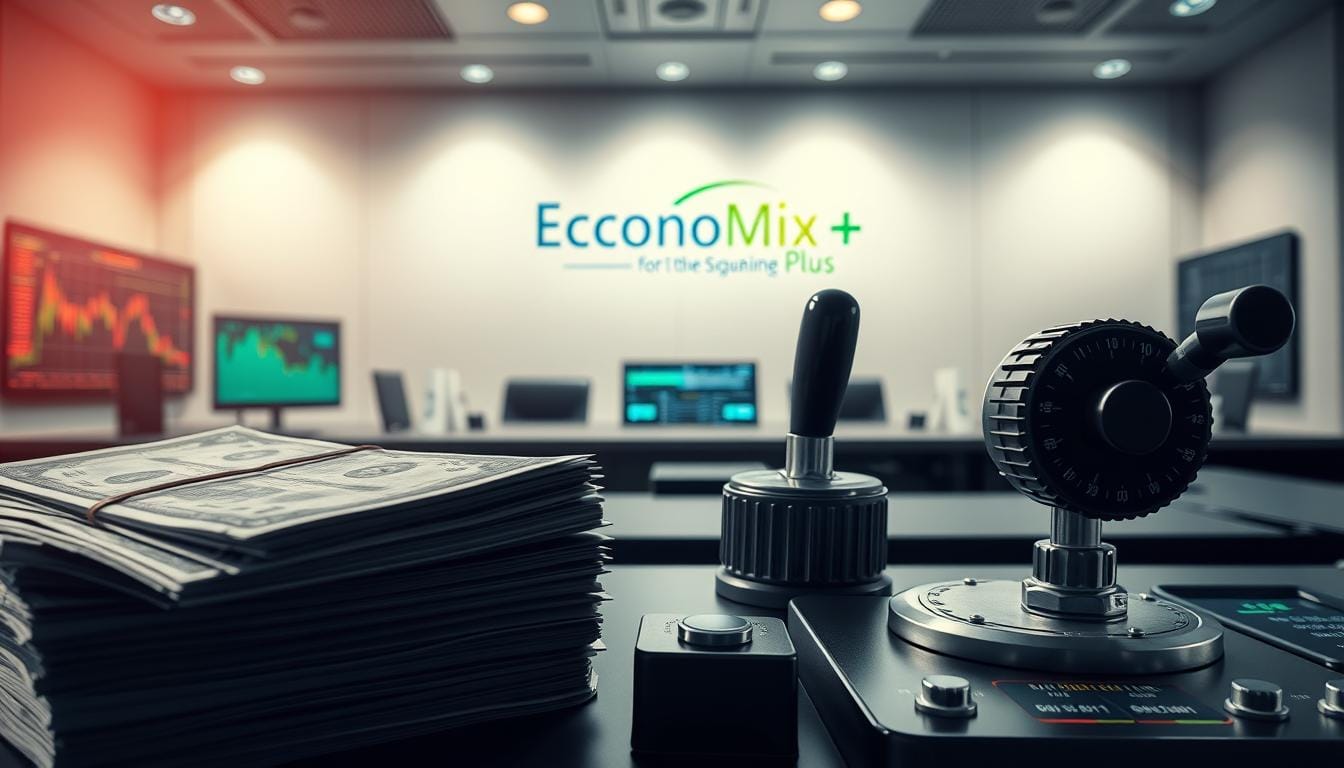
Reserve Requirements and Their Impact
Changing reserve requirements is another key tool. Central banks adjust how much money banks must keep in reserve. This affects how much credit is available in the economy.
Quantitative Controls That Shape Your Economy
Quantitative controls, like credit limits, help direct credit to certain areas. This lets central banks support specific sectors, like small businesses or green energy.
| Monetary Policy Tool | Description | Impact on Economy |
|---|---|---|
| Open Market Operations | Buying or selling government securities | Influences money supply and liquidity |
| Reserve Requirements | Adjusting the percentage of deposits banks must hold | Affects credit availability |
| Quantitative Controls | Credit ceilings or floors to direct credit flow | Supports targeted economic sectors |
Islamic Banking as an Alternative Model
Islamic banking is a unique choice compared to traditional banking. You might know about regular banking, but Islamic banking follows Shariah law. This makes it different.

Principles of Islamic Finance in American Context
In the U.S., Islamic finance is becoming more common. Shariah-compliant finance isn’t just for Muslims. It’s also seen as an ethical banking option by many.
Growing Availability of Shariah-Compliant Options in the U.S.
In the U.S., you can find many Shariah-compliant financial products. This includes banking services and investment options. This growth meets the demand for ethical financial solutions.
Mudarabah and Musharakah Partnerships
Mudarabah and Musharakah are key in Islamic banking. Mudarabah is a profit-sharing deal between a financier and an entrepreneur. Musharakah is a joint venture where both parties share profits and losses.
Practical Applications for American Businesses and Consumers
These models have real uses for American businesses and consumers. For example, Mudarabah can fund business projects. Musharakah helps in joint ventures between local and international companies.
The Velocity of Money in Interest-Free Systems
The speed at which money moves in interest-free systems is key to keeping prices stable and the economy healthy. These systems use ethical banking that doesn’t rely on interest. This approach changes how money flows through the economy.
Circulation of Capital in Ethical Banking
Ethical banking uses profit-and-loss sharing models. This changes how money moves in the economy. It makes transactions more connected to real economic activities.
How Money Moves When Not Driven by Interest Rates
In interest-free systems, money’s flow is influenced by things like investment chances and what people want to buy. This can make the financial world more stable. It makes the economy less likely to swing wildly because of interest rate changes.

Impact on Price Stability
Interest-free systems have a big impact on keeping prices steady. Without interest rates, there’s less chance for wild price swings. This helps keep prices stable.
Historical Examples of Stable Prices in Alternative Systems
Looking at history, we see how interest-free banking can help keep prices stable. For example, some Islamic banking practices have shown they can keep prices steady over time.
| System | Price Stability | Velocity of Money |
|---|---|---|
| Interest-Free | High | Moderate |
| Conventional | Variable | High |
| Commodity-Backed | High | Low |
Asset-Backed Currency Systems and Inflation Control
Asset-backed currencies have played a key role in keeping economies stable, mainly when fighting inflation. Let’s dive into how these systems function and their role in controlling inflation.
These currencies are linked to the value of assets like gold or silver. This link helps keep the currency’s value steady. It’s important for fighting inflation because it stops the over-printing of money that can lower currency value.
Gold and Silver Standards
The gold and silver standards are classic examples of asset-backed currencies. In these systems, currencies were tied to gold or silver values. This meant the amount of money in circulation was matched by the gold or silver reserves a country had.
Learning from America’s Monetary History
The United States has seen both gold and silver standards in action. For example, the Gold Reserve Act of 1934 and the Silver Purchase Act of 1934 show how commodity-backed currencies were used in monetary policy.
For instance, as of end-March 2025, the RBI had 879.59 metric tonnes of gold, with 511.99 metric tonnes at home. Such reserves are key in backing currencies and keeping the economy stable.
Commodity-Backed Currencies
Commodity-backed currencies go beyond gold and silver to include other commodities. These currencies aim to lower inflation risk by linking the currency’s value to a real asset.
Modern Applications for Economic Stability
In today’s world, commodity-backed currencies offer a stable option compared to fiat currencies, during economic ups and downs. Understanding these currencies helps see their role in managing inflation.
Here’s a look at different commodity-backed currencies and their impact on inflation:
| Commodity | Currency Example | Effect on Inflation |
|---|---|---|
| Gold | US Dollar (historically) | Stabilizes currency value |
| Silver | Silver Certificate (US) | Reduces inflation risk |
| Oil | Petro-Yuan (China) | Ties currency to energy prices |

Looking into asset-backed currencies and their role in fighting inflation, we learn about alternative systems that promise stability and security.
Fractional Reserve Banking and Its Ethical Alternatives
When you look into banking, you’ll see fractional reserve banking. This lets banks lend out most of what they get. It’s a big part of today’s finance but has its downsides. Some say it makes money unstable and puts banks ahead of customers.
Full-Reserve Banking Models
Full-reserve banking is a better choice. It makes banks keep all deposits safe. This cuts down on bank failures and financial troubles.
How 100% Reserve Requirements Could Change Your Banking Experience
With 100% reserve, your money is always safe. This builds trust in banks. It could make finance more stable, with banks just handling payments, not taking big risks.
| Feature | Fractional Reserve Banking | Full-Reserve Banking |
|---|---|---|
| Reserve Requirements | Fraction of deposits | 100% of deposits |
| Lending Capability | Can lend out most deposits | Cannot lend out deposits |
| Risk Level | Higher risk of bank runs | Lower risk of bank runs |
Narrow Banking Proposals
Narrow banking is another option. It splits payment services from investments. This keeps your money safe from risky investments.
Separating Payment Services from Investment Activities
Narrow banking tries to avoid financial crises. Your money stays safe. Banks won’t take risks that could harm the economy.
Is There a Link Between the Banking System and a Country’s Inflation? Empirical Evidence
Studies from countries with dual banking systems show a complex link between banking and inflation. Looking at nations with both traditional and alternative banking models helps us understand this relationship better.
Case Studies from Countries with Dual Banking Systems
Many countries have dual banking systems. This allows us to compare traditional interest-based banking with alternative models like Islamic banking. For example, Malaysia and Indonesia have both conventional and Islamic banking sectors.
Lessons for the United States Economy
The experiences of these countries teach us valuable lessons for the United States. By studying how different banking models affect inflation, policymakers can make better choices. This includes considering the benefits and drawbacks of alternative banking systems.
Statistical Correlations and Analysis
Statistical analysis of dual banking systems shows interesting links between banking models and inflation. Research indicates that countries with more Islamic banking tend to have lower inflation. This is compared to those with mostly traditional banking.
What the Data Reveals About Banking Models and Price Stability
The data suggests that alternative banking models, like Islamic banking, may help keep prices stable. This is because they focus on financing based on assets and risk-sharing. This challenges the idea that traditional interest-based banking is key for stability.
Understanding the evidence and statistical links helps us see the benefits of diverse banking models. They can help with economic stability and controlling inflation.
The Role of Profit-Sharing Investment Accounts in Price Stability
Profit-sharing investment accounts are key in seeking economic stability. They share risk and reward between the bank and the investor. This can lead to a more stable economy.
Risk Distribution Mechanisms
The risk distribution in these accounts is vital. They spread the risks of investments. This helps reduce the financial stress on each investor, promoting overall stability.
How Shared Risk Can Protect Your Purchasing Power
Sharing risks lessens the impact of financial downturns on investors. This method can safeguard your buying power. It reduces the chance of big financial losses.
Economic Shock Absorption Capabilities
Economic shock absorption is a major advantage of these accounts. They distribute risk, helping to absorb economic shocks. This makes the financial system more resilient.
Building Resilience in Your Financial System
Adding profit-sharing investment accounts to your strategy boosts your financial system’s resilience. They diversify investments and share risks. This makes your financial portfolio stronger against economic ups and downs.
In summary, profit-sharing investment accounts are a good way to keep prices stable. They work through risk sharing and absorbing economic shocks. By using these accounts, you can protect your money and help stabilize the economy.
Digital Currencies and Their Impact on Inflation
Digital currencies, powered by blockchain, are changing how we think about inflation. It’s key to grasp how these currencies work and their effect on money policies.
Blockchain-Based Ethical Financial Systems
Blockchain is more than digital money; it’s about fair, open financial systems. Ethereum and others are leading the way. They make it possible for apps to handle money without banks.
Beyond Bitcoin: Ethical Cryptocurrency Options
Bitcoin is famous, but Cardano and Polkadot focus on being green and fair. They aim to lessen mining’s harm and create fairer money systems.
Cryptocurrency Models Without Interest
New models of cryptocurrency don’t use interest. Instead, they use staking and validation for returns. This is different from old money systems.
Staking and Validation as Alternatives to Interest-Bearing Assets
In proof-of-stake (PoS), validators make new blocks based on how much they stake. This is more energy-friendly and fair. It offers a new way to earn money.
- Less energy use than proof-of-work
- Encourages honest behavior from validators
- Provides a new way to earn money
Digital currencies are growing, and their effect on inflation is important. Looking into ethical options and new ways to earn money helps us see the future of finance.
Ethical Banking Regulations and Inflation Management
Ethical banking rules are key to fighting inflation. They shape a country’s economy. Understanding these rules is vital.
Regulatory Frameworks for Interest-Free Banking in America
Creating rules for interest-free banking in the U.S. is tough. It needs a deep grasp of finance and ethics. The U.S. mainly uses interest-based banking, making this shift hard but needed.
Current Legislation and Future Possibilities
The U.S. laws don’t fully support interest-free banking. Yet, talks and plans are underway for change. The Banking Act of 1933 is a starting point, but its repeal in 1999 has made things harder.
“The future of banking lies in its ability to adapt to ethical standards that prioritize the well-being of society and the environment.”
New banking models that follow ethical rules are being explored. This could lead to new laws that support these models.
Compliance and Governance Standards
Good compliance and governance are key for ethical banking. They keep banks within legal and ethical limits. This keeps the financial system strong.
How Ethical Oversight Affects Economic Stability
Ethical banking oversight boosts compliance and stability. It reduces risks from bad financial practices. A strong governance system helps catch and stop financial wrongdoings early, protecting the economy.
| Regulatory Aspect | Conventional Banking | Ethical Banking |
|---|---|---|
| Interest-Based Transactions | Predominant | Prohibited |
| Risk Management | Focus on returns | Balanced risk and ethics |
| Governance | Primarily financial | Ethical and financial |
Looking at ethical banking’s role in fighting inflation shows its importance. A solid regulatory framework is essential. It makes the financial system stronger and better at handling economic issues.
Community Banking Models and Local Economic Stability
Community banking models shine as a light in uncertain times. They include credit unions and local currency projects. These help meet the financial needs of locals, making the economy stronger.
Credit Unions and Cooperative Banking
Credit unions are owned by their members, not shareholders. They offer a personal banking experience with better terms than big banks. Being a member means you’re part of a community-focused bank.
Member-Owned Alternatives in Your Community
When you join a credit union, you own a piece of it. You get to help decide how it runs and share in its profits. This way, the bank focuses on helping the community, not just making money.
Local Currency Initiatives
Local currencies are special money for a certain area. They help keep money in the community, supporting local businesses and stability.
How Community Currencies Can Insulate from National Inflation
Local currencies protect against national inflation. They keep money in the local circle. This helps keep the community’s buying power strong, even when the national money loses value.
| Banking Model | Key Features | Benefits |
|---|---|---|
| Credit Unions | Not-for-profit, member-owned | Personalized service, favorable terms |
| Local Currency Initiatives | Geographic-specific currencies | Encourages local spending, buffers against national inflation |
Supporting community banking, like credit unions and local currencies, helps your local economy thrive. These models offer more than just banking services. They build community and cooperation.
The Psychology of Inflation Expectations in Different Banking Systems
The way we see inflation changes a lot between regular and ethical banks. Our view of inflation depends on how open, fair, and stable the bank is.
Consumer Behavior in Interest-Free Economies
In places without interest, people start to spend more wisely. They think more about the good they do with their money.
How Your Spending Patterns Might Change
With ethical banking, you might choose to invest in things that help people and the planet. This can make the economy grow better and keep prices stable.
A study showed big differences in how people invest with regular versus ethical banks.
| Investment Type | Conventional Banking | Ethical Banking |
|---|---|---|
| High-Yield Savings | 60% | 30% |
| Socially Responsible Investments | 20% | 60% |
| Other Investments | 20% | 10% |
Trust Factors in Ethical Banking
Trust is key in ethical banking. People want to believe the system is honest and fair. They’re more likely to invest if they trust it.
Building Confidence in Alternative Financial Systems
To gain trust, ethical banks need to be open, well-governed, and follow rules closely. This builds a sense of safety and trust among users.
Wealth Distribution Effects of Ethical Banking on Inflation
Ethical banking is seen as a way to cut down income inequality. It focuses on fair financial systems to make wealth distribution more even. This can help keep inflation stable.
Reducing Income Inequality Through Banking Practices
Ethical banking aims to include everyone in the financial world. It offers fair access to capital for both people and businesses. This helps close the wealth gap, tackling income inequality.
How More Equitable Wealth Distribution Stabilizes Prices
When wealth is spread out, people can buy things more consistently. This steadiness helps keep prices stable. As a result, inflation is easier to manage.
Economic Justice and Price Stability
Economic justice and stable prices go hand in hand. Ethical banking ensures everyone has fair access to financial services. This promotes economic fairness.
The Connection Between Fair Financial Systems and Controlled Inflation
Fair financial systems help control inflation by preventing wealth concentration. When wealth is shared fairly, it stops economic bubbles. This leads to steady economic growth.
Transitioning to More Ethical Banking Systems: Challenges and Opportunities
Switching to ethical banking is a tough journey with both ups and downs. Financial groups and rule-makers must figure out the practical steps for a smooth change.
Implementation Roadmaps for Financial Institutions
Banks and credit unions need a clear plan to move forward. This means:
- Assessing current practices against ethical banking standards.
- Developing new products that follow ethical rules.
- Training staff on the value and use of ethical banking.
Practical Steps for Banks and Credit Unions
Banks and credit unions can begin by adding ethics to their plans. They can update lending to support green and fair practices.
Policy Recommendations for Regulators
Regulators are key in helping banks go ethical. They can:
- Make rules that push for ethical banking.
- Give rewards for banks that choose ethical paths.
How Policymakers Can Support Ethical Banking Evolution
Policymakers can help by creating a friendly rule environment. They can offer advice on top practices and make sure rules are open to new, ethical banking ideas.
Building a Stable Economic Future Through Ethical Finance
The banking system is key to a country’s inflation. Ethical finance offers a way to a stable future. It promotes responsible lending and borrowing.
Ethical finance uses asset-backed currencies and profit-sharing. This reduces economic shocks. It also leads to wealth distribution, making the economy more stable.
Choosing ethical finance makes the economy stronger. It helps you face economic challenges better. Starting with ethical finance is the first step to a stable future.
FAQ
▶
▶
▶
▶
▶
▶
▶
▶
▶
▶
▶
▶
▶
▶




